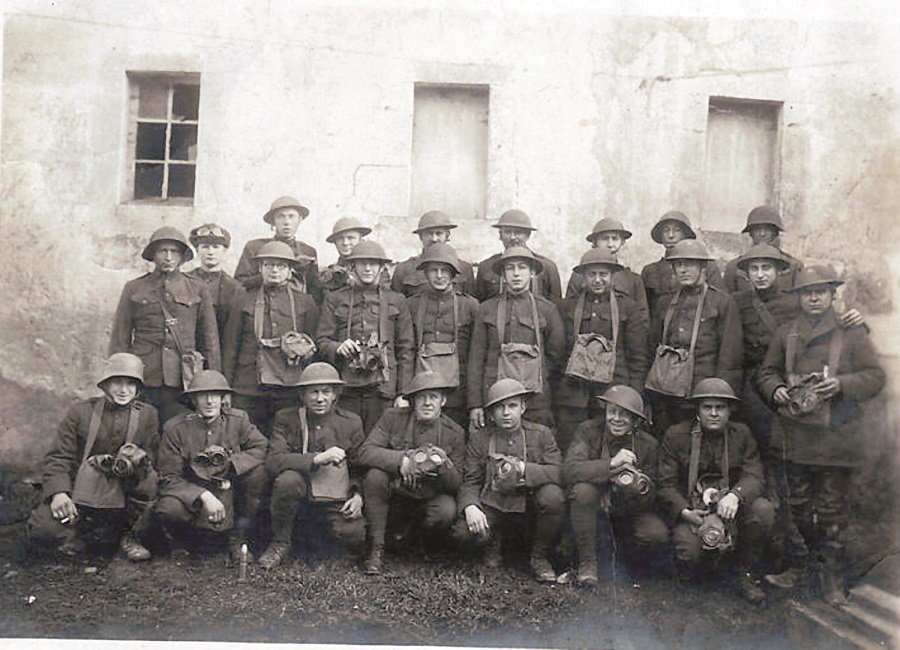
How Cues from Athletic Helmets Can Help Reduce Traumatic Head Injuries
For more than 3 decades March has been designated by the Brain Injury Association of America (BIAA) as “Brain Injury Awareness Month,” and it is now recognized by the U.S. Department of Defense (DoD) as an important reminder of the efforts to understand, prevent, diagnose and treat traumatic brain injury (TBI). In October 2019, the DoD outlined a strategy and action plan to support warfighter brain health.
Through the Defense and Veterans Brain Injury Center, a division of the Defense Health Agency, Research, Development & Acquisition Directorate and the Defense Centers of Excellence for Psychological Health and Traumatic Brain Injury (DCoE), the TBI department is now leveraging new technologies and cutting-edge research to develop concussion care tools and protocols that prioritize early identification and individualized treatment to maximize warfighter brain health.

This is an important step forward as the DoD reported that there were nearly 18,000 new TBI diagnoses in 2017. There has been a paradigm shift in the diagnoses and treatment of TBI as more than 85% of those who suffered even a mild injury can experience lasting symptoms. These can include changes in vision, headaches, trouble sleeping and notably concentration.
Recent studies of both athletes and warfighters have found that helmets—when used properly—can reduce TBI. A report in the Journal of Military and Veterans’ Health (JMVH) found that most TBIs were the result of improvised explosive devices (IEDs) and the efforts to reduce these injuries. The study found:
“At present, no existing helmet is able to fully protect against all threats faced on the battlefield. The prominence of traumatic brain injury from improvised explosive devices in the current conflicts in Iraq and Afghanistan has highlighted the limitations in knowledge about blast and how to provide protection from it. As a result, considerable research is currently occurring in how to protect the head from blast overpressure.”
Lessons for History
Helmets are of course not new to the battlefield, and soldiers have worn protective headgear for eons but fell into disuse amongst infantry due to the weight. During WWI, combat helmets made a comeback due in part to injuries from low-velocity impacts, notably artillery blasts.
The French military were among the first to introduce steel skull caps, which were worn under their kepis. Germany also introduced a skull cap, and by the end of the War in 1918 all the major combatant powers had adopted steel helmets. Over the next 50 years helmet design improved, but steel remained the primary material for the outer shell of helmets. It was effective at stopping low-velocity impacts from shrapnel, but in the right circumstances it could also deflect high-velocity impacts from firearms.
Steel helmets were largely not able to stop penetrations from most firearms due to the fact that the steel required would be too heavy for wear, even for limited times. Germany had found this out during WWI when it supplemented its steel helmets with special plates for machine gunners. While effective, the weight of the helmets limited the soldiers’ movement.
In the 1970s, the U.S. military developed the first ballistic helmets, and the Personnel Armor System for Ground Troops (PASGT) was introduced in 1983. The shell was made from 19 layers of Kevlar, the ballistic aramid fabric that was treated with a phenolic resin system. The helmets were rated at a Threat Level IIIA as per DARPA, the USMC and the U.S. Army to provide protection against shrapnel and ballistic threats. The helmets meet the 1800 requirement of MIL-STD-662E.
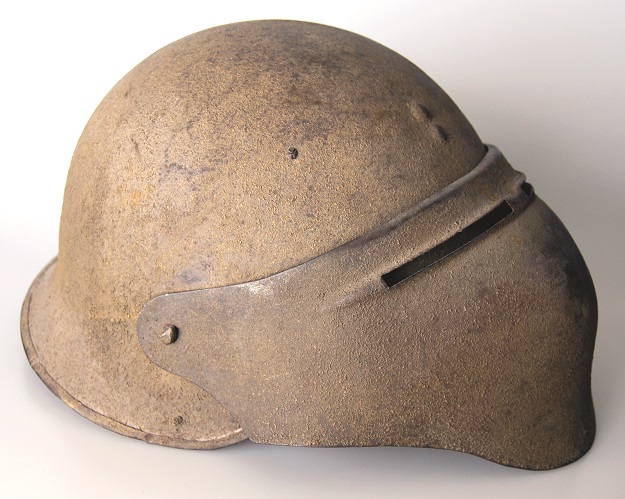
Further helmet development has addressed gunshot wounds as well as blunt force trauma including motor vehicle accidents, aircraft crashes, parachute jumps and blast impacts. The latter is most complex as it can be divided into primary blast injury, which is the direct effect of air pressure waves travelling faster than the speed of sound, and the secondary blast injury from shrapnel and debris. There is also the tertiary blast injury, which can occur when victims are thrown through the air and strike another object. All of these blunt force impacts can lead to traumatic brain injury.
What Helmets Need
At present no helmet is able to protect all persons against such a variety of threats. However, as the JMVH study recommended helmet designers need to consider a wide range of factors. This can include the overall helmet size as well as its mass. In addition, the acoustic protection, ballistic qualities of the construction material, comfort, maintenance of the field of vision and hearing and compatibility with weapons and other equipment must be taken into consideration.
Other factors include the availability of raw materials and manufacturing techniques to produce such a helmet, as well as the ability to decontaminate a helmet from nuclear, biological and chemical threats. All this has actually made it harder, not easier to develop a modern combat helmet. “For many years helmets have protected against impacts enshrined in military or civil standards,” explained Richard Coomber, vice president of integrated systems at Vermont-based Revision Military.
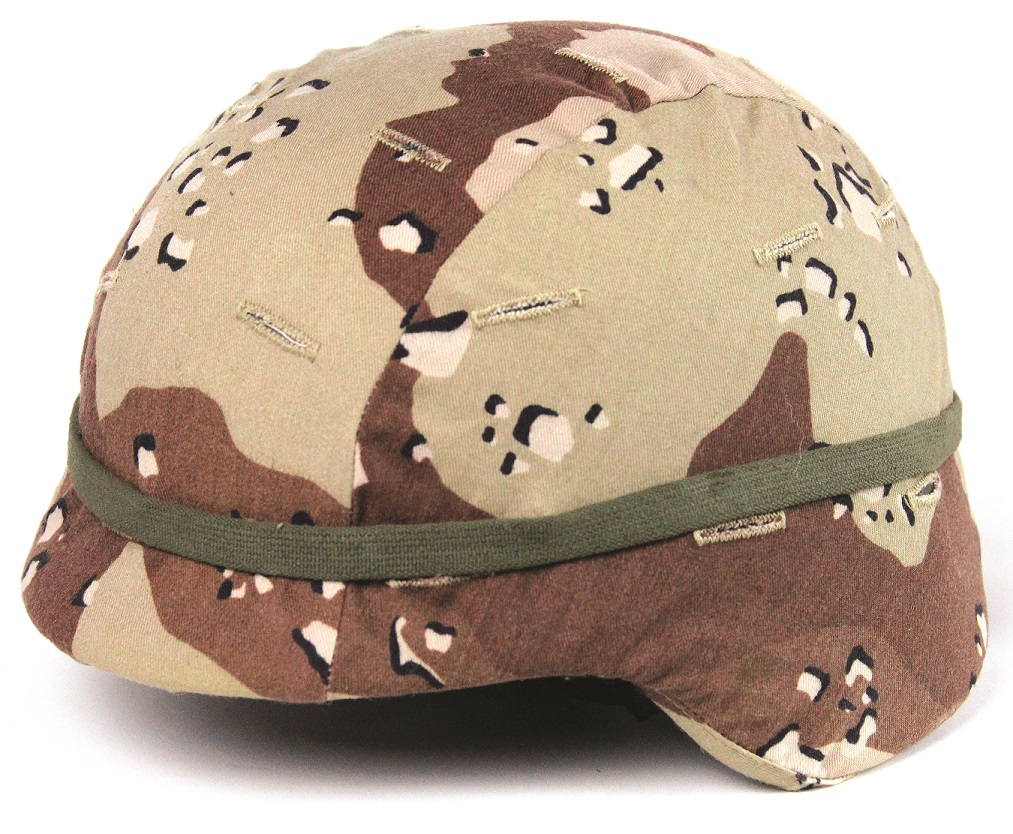
“However, the variety of standards seen in the global military space shows there is no undisputed agreement on exactly what threat we are trying to protect against,” added Coomber. “Historically, we have asked: Is it a mild impact that occurs multiple times or a large single impact? However, the game is rapidly changing, as the threat of a translational impact—imagine dropping a ball—is only one injury mechanism.”
Such types of impacts weren’t considered 100 years ago, or even just 50 years ago. “Recent experience on operations and the huge amount of work being done to understand mild TBI (mTBI) is showing us that the result of an oblique impact, where rotational forces are transmitted to the head, or the effect of a blast pressure wave passing through the helmet and head, are likely the more worrying injury mechanisms,” said Coomber. “There is much work to be done in this regard, and the military and industry are going to have to adopt a ‘better-than-now’ approach to the solutions, as defining a true pass/fail requirement in this space is years away and different for each individual.”
Taking a Cue from Athletic Helmets
One hundred years ago, helmet designers rarely looked beyond medieval armor and perhaps some innovations in fire fighting and mining. In fact, the French Model 1915 Adrian Helmet was based on the Parisian firefighters’ helmet—which itself was modeled after the French heavy cavalry helmets.
In the 1930s, the American military sought insight from football helmet maker Riddell in developing a better liner system, while General George S. Patton designed a tanker uniform that included a football-style helmet. The forward-thinking Patton saw that a steel helmet in a tank was impractical, and this led indirectly to the development of a helmet designed to cushion the head more than to stop bullets.
Just as Patton looked to the benefits of an athletic helmet so too have companies such as VICIS, Inc., which has focused efforts more on the athletic field than the battlefield, because what can reduce concussions in contact sports could certainly benefit modern warfighters. “Head injuries are top of mind in football,” explained Brian Matakis, vice president of marketing at VICIS, Inc. The company has earned top marks from Virginia Tech, which has conducted impact testing on helmets, and this led to the development of the ZERO1, a highly engineered football helmet designed to reduce impact forces.
The U.S. Army then asked the Seattle-based company to adapt its VICIS football helmet technology for use in advanced combat helmets, and in early 2018 it received a contract from the U.S. Army Natick Soldier Research, Development and Engineering Center (NSRDEC)—now the Combat Capabilities Development Command Soldier Center (CCDC)—to support this work. As the company noted, current combat helmets are still optimized for ballistic protection, but most peacetime head injuries are the result from blunt force impact.
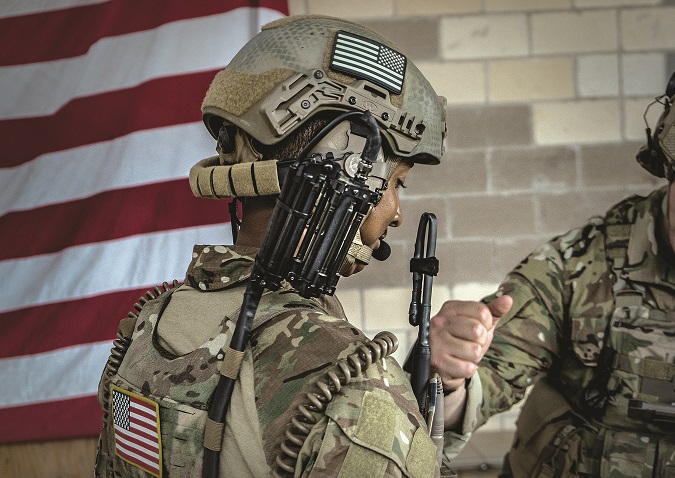
Even in combat conditions blunt force can result in TBI, and VICIS has worked to replace current combat helmet suspension pad systems with an engineered structure that was derived from its football helmet technology. This includes VICIS RFLX technology, a layer closest to the outer ballistic shell, which can reduce blunt force impacts, while a transition membrane that is constructed from a lightweight yet flexible material acts as the intermediate layer. Finally, military-grade foam provides comfort and fit for the combat helmet. “We found that the basic foam in a conventional helmet suspension pad didn’t absorb the impact before it reaches the head,” said Matakis. “Our system is far more sophisticated and features these multiple layers to reduce impact forces efficiently.”
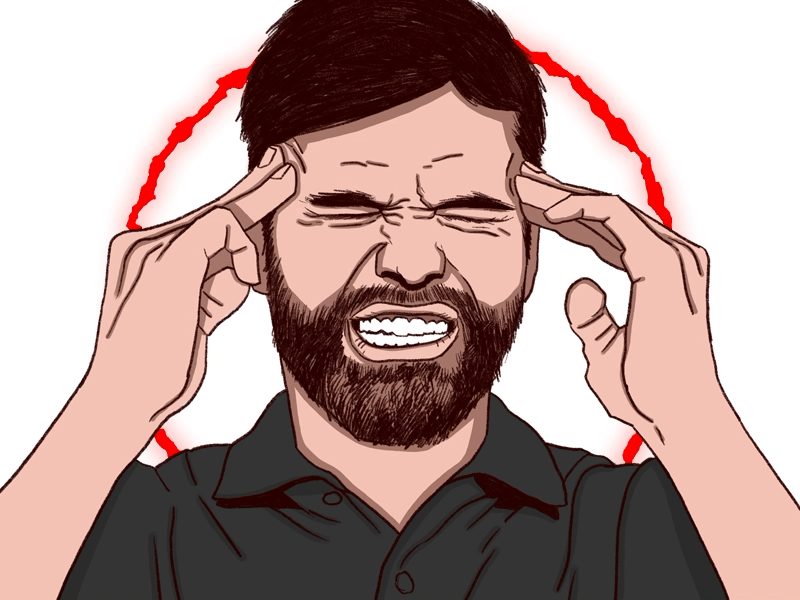
Great Focus on the Helmet Liner
As noted, since the first steel helmets were introduced to the infantrymen in the trenches, the focus was on a shell that could stop impacts from directly hitting the head. The thinking at the time was little changed from antiquity when helmets were meant to stop a sword or other object from causing damage to the wearer’s head. As helmets’ shells are strong enough to stop even small arms fire today, the focus has shifted to the liners, which previously were just about the comfort more than doing much to protect the wearer.

“While the exact injury mechanism is just emerging, it is clear that only by adopting a ‘system approach’ can all the dangers be mitigated,” said Revision Military’s Coomber. “The liner is certainly part of the solution, but traditional liners could also be part of the problem as some variants funnel blast overpressure between the head and helmet, which magnifies the effects. New liners need to be developed that can mitigate the risk of translational, rotational and overpressure threats.”

Efforts in this regard are already being made. Cleveland-based Team Wendy has also been working with the U.S. Army and USMC for the past decade towards reducing TBI in soldiers and warfighters. The company was founded in 1997 by Cleveland-based entrepreneur Dan T. Moore as a way to honor his daughter, Wendy, who died from a TBI following a skiing accident. The company had initially focusedmanufacturing ski helmets but transitioned to military, law enforcement and search and rescue headgear as well. The company’s mission has been to research, develop, design and deliver innovative, protective helmets and impact-mitigating products.
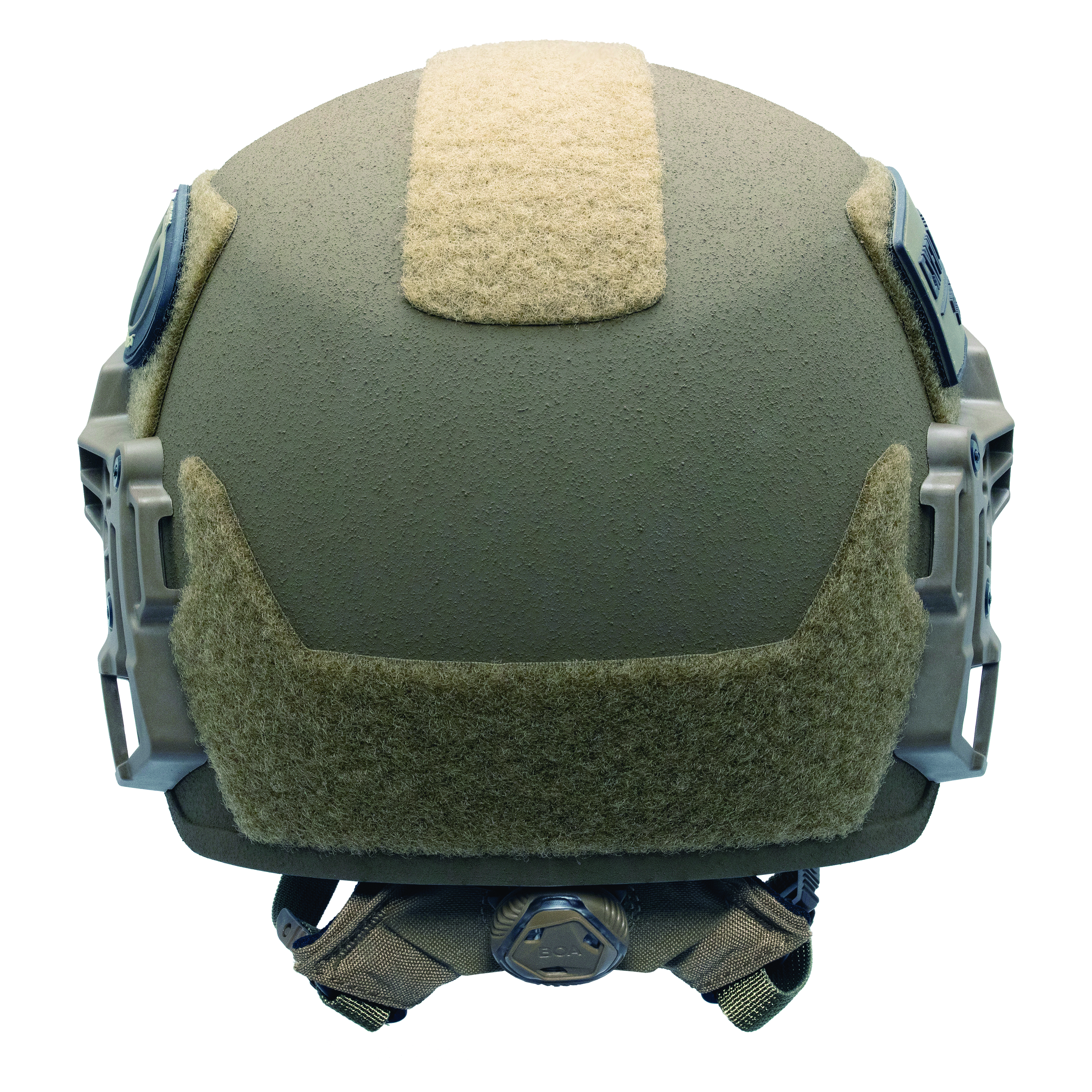
While much progress has been made in helmets that can reduce TBI, for Team Wendy there is still room for improvement. “The specifications for blunt impacts have evolved,” said Ron Szalkowski, director of product development and research collaboration at Team Wendy. “A lot of this goes back to the 1980s with helicopter crash reconstruction efforts.” Szalkowski explained that among those killed in the crashes, there was little compression in the liners. The helmets were just too stiff. The conventional thinking even into this period was that the skull was a solid shell, and if you could keep it from getting penetrated the helmet did its job. Unfortunately, thinking of the head this way didn’t take into consideration the damage that could occur inside the skull.
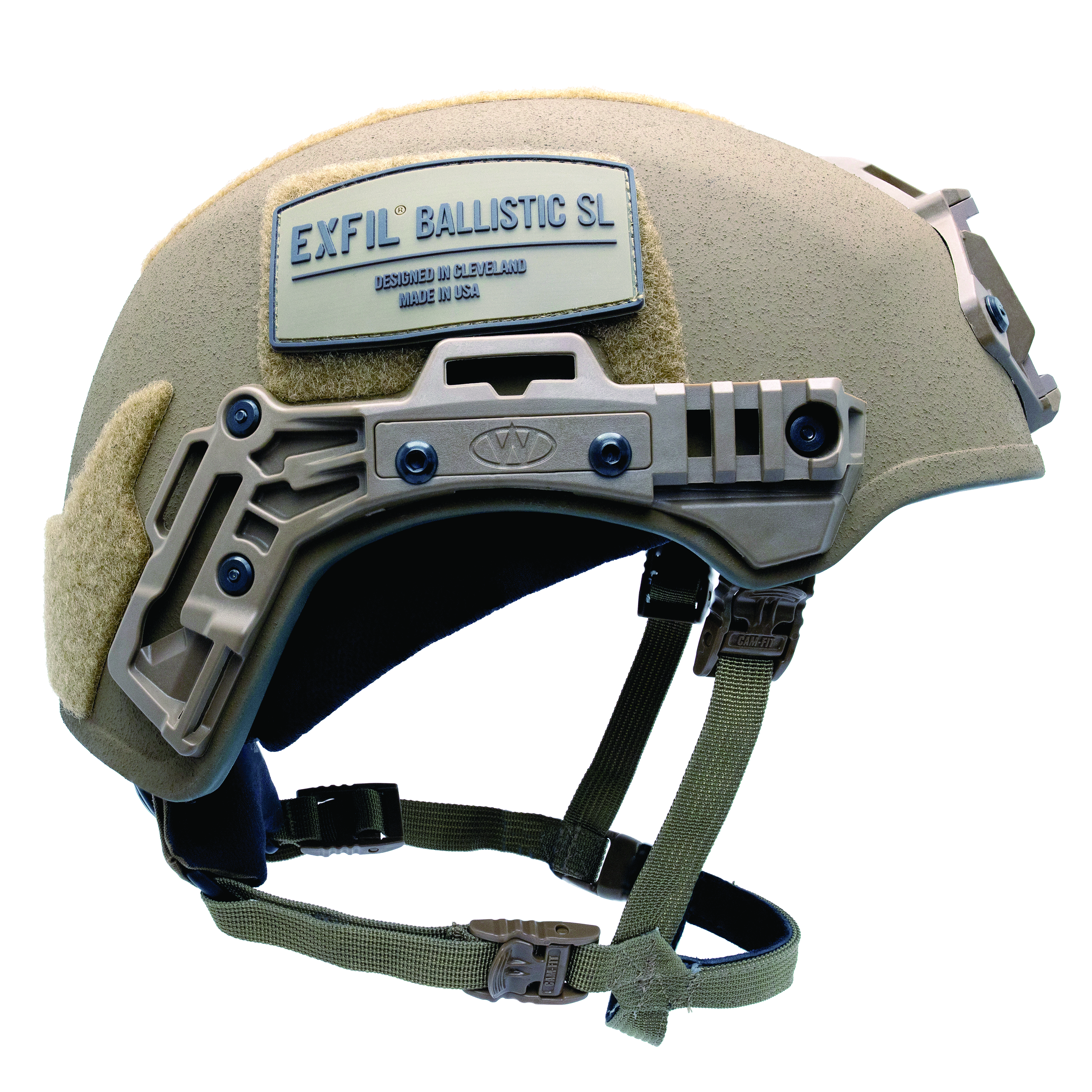
“What you really want to consider is what the brain tissue is experiencing,” added Szalkowski. “How much is it stretching and more importantly how fast is it stretching? The cellular research points to being able to stretch it slowly, whereas exceeding certain rates can be far more damaging to the brain.”
One of the problems has been that the long-established method for determining a helmet’s blunt-impact protective ability was to test it using a uniaxial drop tower. This has allowed Team Wendy and its rivals to develop and optimize the materials to make a better helmet and liner system, but this test doesn’t always replicate real-world impacts that included complex, non-linear motions.

Team Wendy’s research has noted that angular or rotational movements can play a significant role in brain tissue strain that can lead to TBI. While there is no well-established rotational impact testing methodology or injury threshold, Team Wendy has found ways to test helmet and liner designs that can mitigate against rotational accelerations. “We are really trying to start with the test method and ways to determine how to best mitigate against rotational accelerations,” explained Szalkowski. “We want to be sure we’re on a solid foundation of understanding there before making any performance claims,” he added. “The first level of this is understanding which type and magnitude of rotations may be harmful to the brain; some numbers have been kicked around in the sports community, but with the complexity of the injury, it’s really difficult to draw a clear correlation, even in terms of whether rotational velocity or rotational acceleration is more important—probably they both are.”
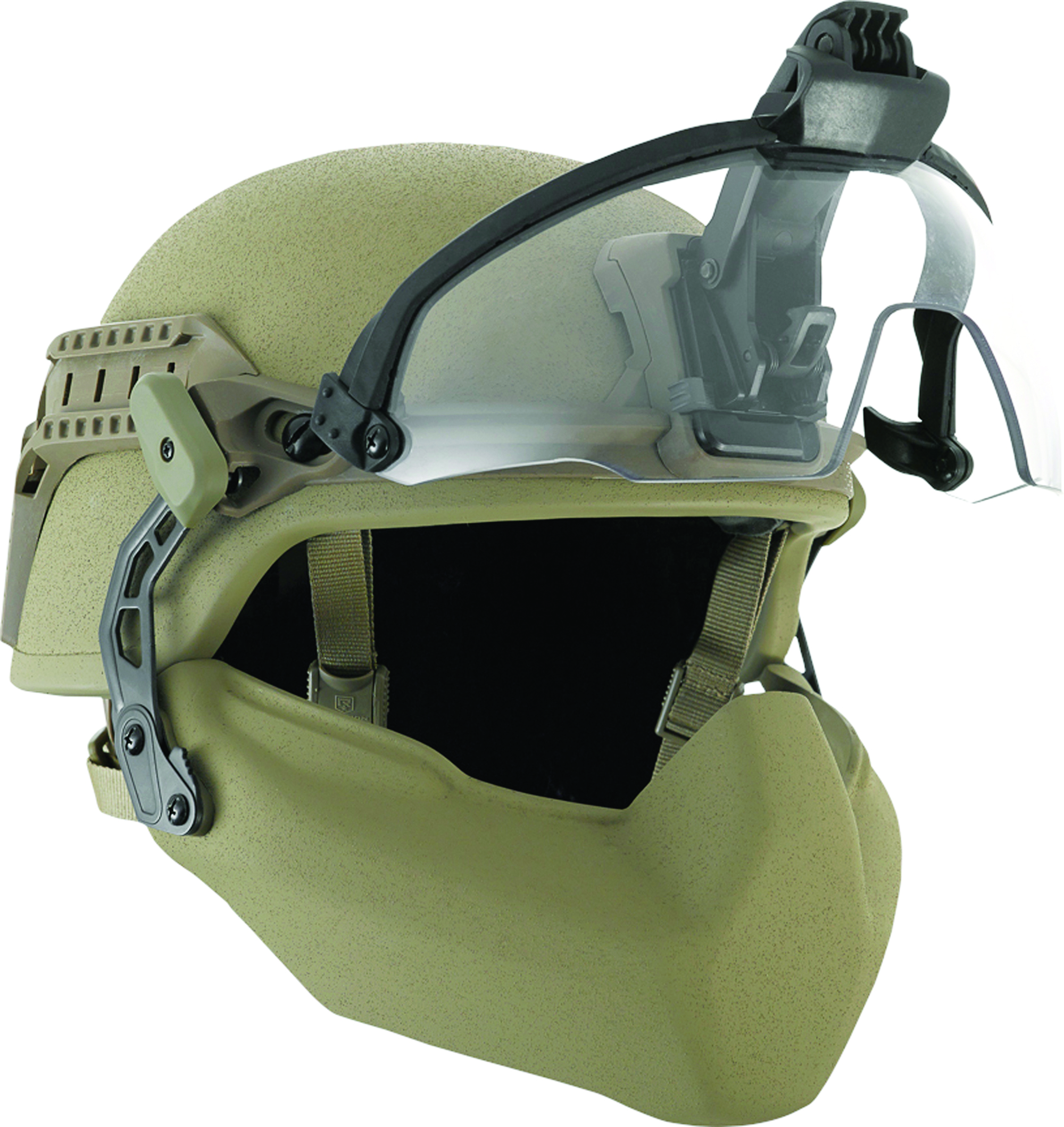
To this end, Team Wendy has conducted an impact test directly through the center of the mass of the head, and then offset 10cm, which imparts a rotation. “In this case, the test head was not attached to a neck, which is not realistic but is worst-case to frame the situation against a purely linear impact,” said Szalkowski. “From here we can establish whether the brain tissue strains get into the concerning range anywhere, as well as how that varies for different impact locations and velocities.”
Addressing Ballistic Impacts and Blasts
One of the greatest problems facing helmet development is that it is impossible to address every possible scenario. Ballistic threats can present a different energy mitigation challenge compared to blunt, while shockwaves emanating from blasts—including IEDs—can present another challenge. The propagation of the shock front can be another contributor to brain injury.
Team Wendy has sought to protect from these threats with its open-cell polyurethane foam pads that are designed specifically to provide impact mitigation and energy absorption, while the company has explored the capabilities of molded polymer structures as a way to mitigate the impact forces by bending and buckling under compression. In other words, unlike a rigid steel helmet that wouldn’t absorb the impact, such a shell would be able to transform and manage the forces.
The polymer structures also provide independent control of the chemical makeup of the material and the structure or geometric shape. “Currently there are pros and cons, but foams have the benefit of being very lightweight, and they are what we currently implement in the vast majority of our products,” said Szalkowski. “The ability to tune the response of the polymer structures will be interesting as we continue to understand rotation, and we’re also now evaluating 3D-printed structures which allow us to make shapes that previously could not be formed due to the limitations of injection molding.”
However, even the best of helmets probably can’t address every situation. “Is it possible to do it and address high-velocity, low-velocity and blunt-force impacts?” pondered Szalkowski. “That isn’t really possible as such a helmet would be too big and far too heavy … .” Instead the helmet is about increasing survivability on the battlefield and reducing the impacts that can result in TBI. To that end we could be well on the road.
“The combat helmet outer shell protects against ballistic threats; it is possible to envision a helmet that would include additional inner layers, such as the ZERO1 RFLX layer that would allow mitigation of acceleration forces thereby providing additional protection against blunt impacts,” said Matakis. “Currently, combat helmets are attempting to mitigate acceleration forces arising from blunt impacts with suspension pad systems, which are sets of foam pads Velcroed to the inner surface of the outer shell,” Matakis added. “VICIS is leveraging the technology implemented in its top ranking football helmets to develop an engineered material for high-performance suspension pad systems leading to optimal warfighter protection.”
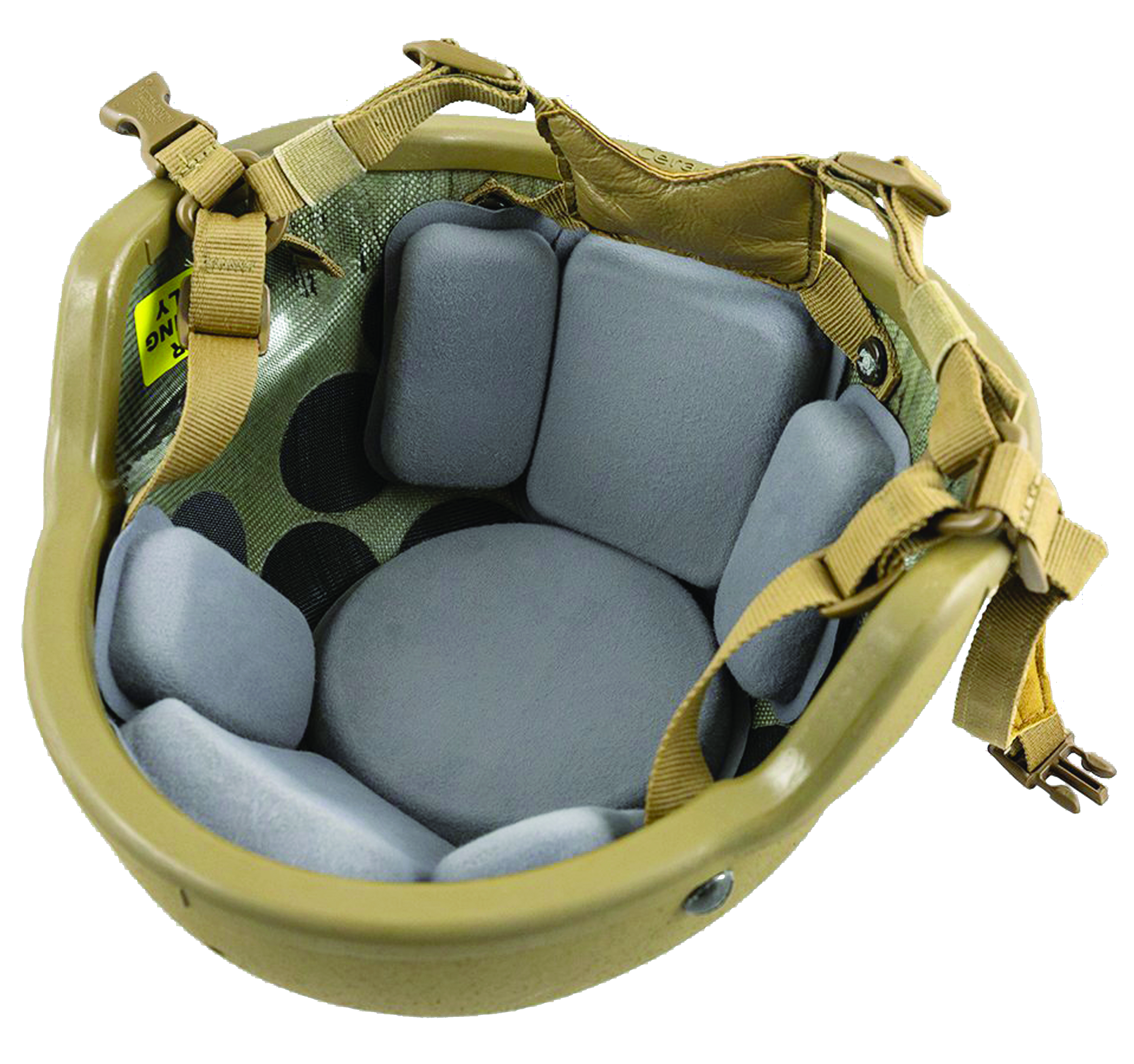
What About Comfort?
In the end, one of the most important parts of helmet development also comes down to ensuring that it is comfortable enough that warfighters, law enforcement or others can actually wear it for extended periods of time in the field. “This is one of those parameters that we don’t want to compromise on,” said Szalkowski. “This can include having the right materials and placement to relieve pressure. We need to have the helmet fit so that it can naturally alleviate pressure points. This is so important with ballistic helmets.”
A helmet that isn’t comfortable is one that warfighters will likely take off, but comfort shouldn’t come at the expense of its ability to protect. As such, helmet makers are still fighting a battle for a helmet that can both protect while being comfortable to wear. “If it’s not on your head it will not help,” said Coomber. “The helmet must be comfortable enough to wear for extended periods without causing pain or being distracting. Having said that, a helmet that is comfortable but not stable on the head fails to meet the user need as well.”
This is especially true as the helmet is increasingly being seen as a platform for additional capability such as Night Vision Devices and head-up displays. “Without stability during physical movement these capabilities do not work,” added Coomber. “As we look at the future of helmets, we will need to change the way we think of helmets from being a protective product to one part of the soldier system and whose measure of success is survivability, not just protection. Ideally our soldiers have a piece of equipment that makes them so agile and lethal they do not get shot or hit their heads. In the future, we want our helmets’ protection to be the last line of defense, not the first.”
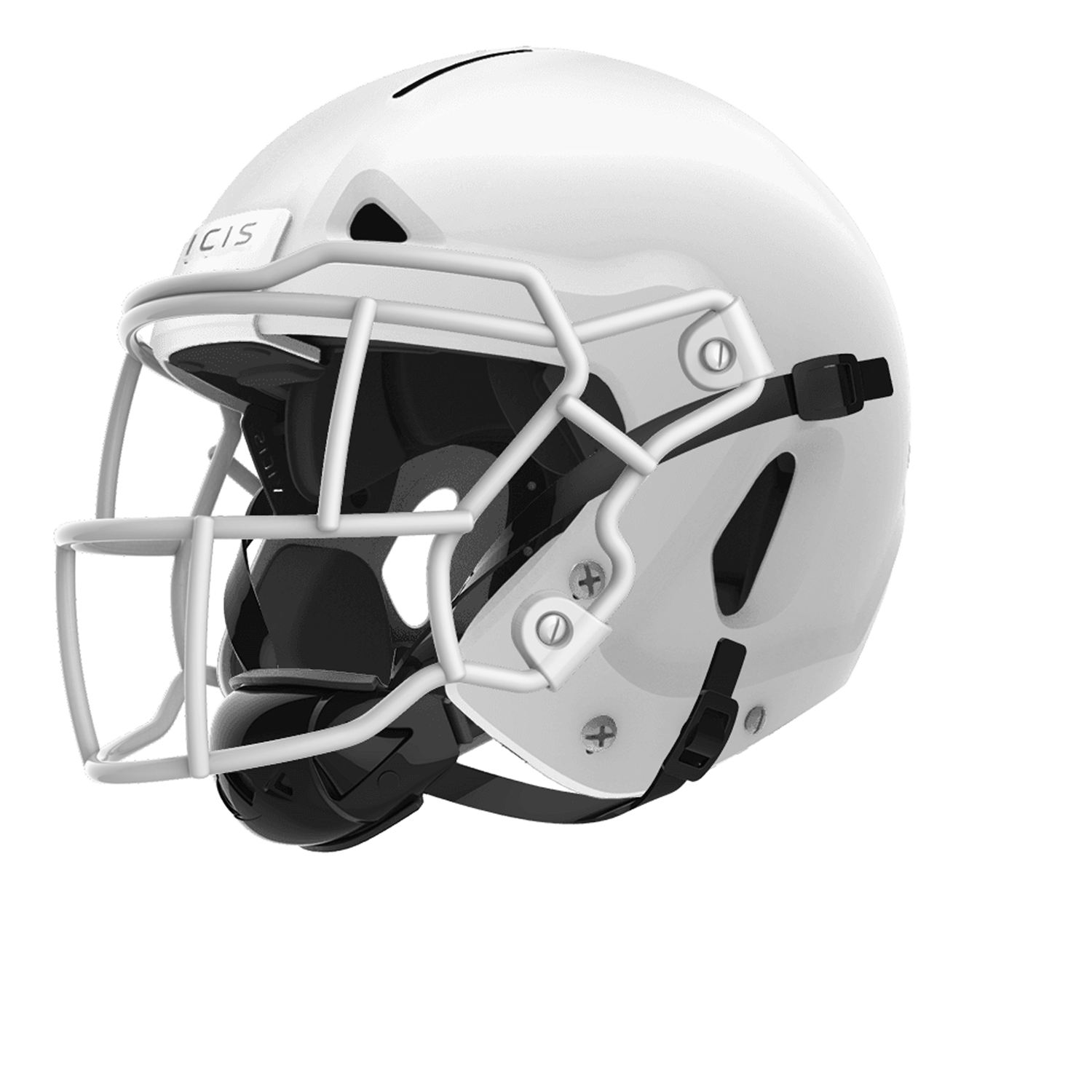
Peter Suciu is the author of multiple books on the history of military helmets. His latest book, A Gallery of Military Headdress, was released last year.




